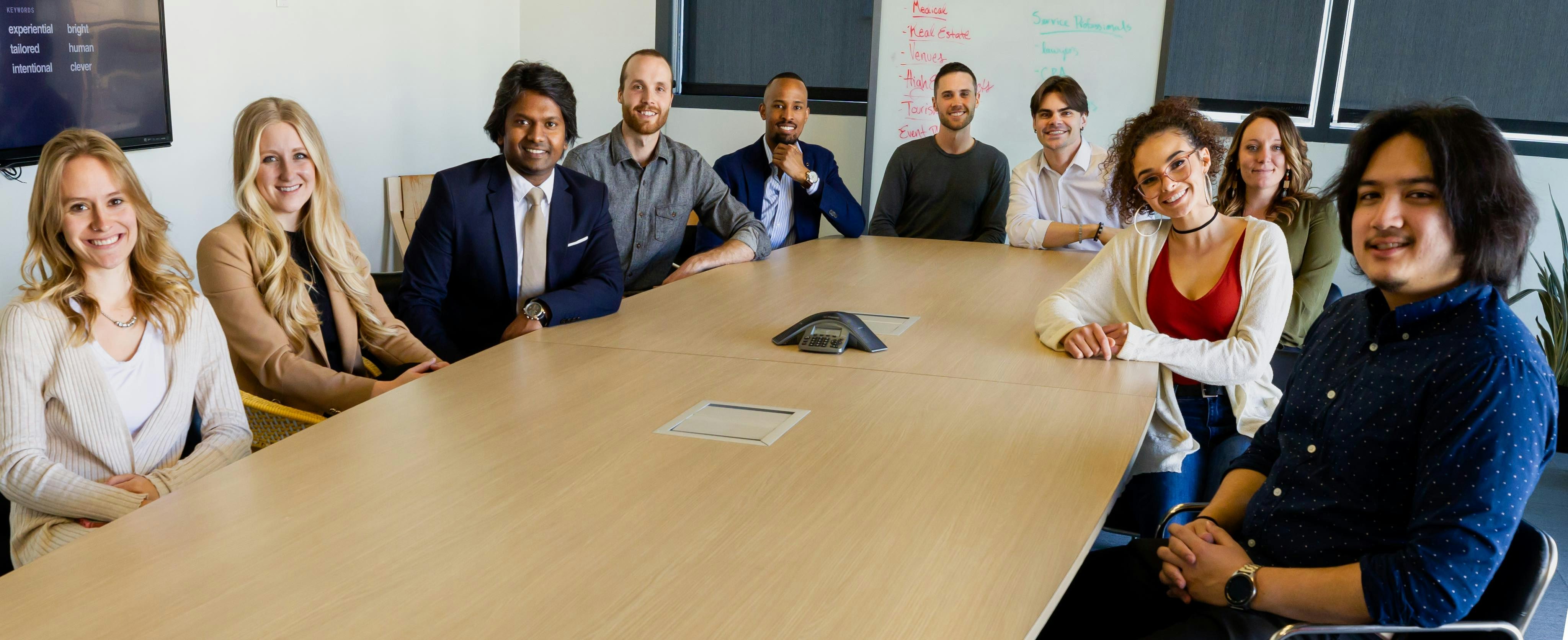Why the Creative Technologist Role Is the Perfect Fit for AI Leadership

Most companies looking to "do something with AI" start by searching for an AI specialist, a machine learning engineer, or a data scientist.
Those roles matter. But they're not always the ones who successfully turn AI from a slide in a strategy deck into something real that users touch, use, and pay for.
Very often, the people best positioned to lead this work are already inside the organisation under a different title:
Creative Technologist.
Sitting between product, design, engineering, data, and marketing, Creative Technologists are used to turning vague ideas into working prototypes. That mindset—experimental, cross-functional, and delivery-focused—is exactly what modern AI programmes need.
Need Help Building Your AI Leadership Team?
If you're looking to identify the right people to lead your AI initiatives or need help building cross-functional AI teams, let's discuss how Creative Technologists can accelerate your AI adoption.
Book a Free Strategy CallAI Leadership Is Not Just About Models
When organisations talk about "AI leadership", they often picture someone who knows models, embeddings, vector databases, or research papers.
In practice, AI adoption looks much more like:
- Understanding where AI supports business goals
- Translating messy requirements into concrete use cases
- Designing user journeys that include AI without confusing people
- Integrating APIs into existing systems
- Setting up measurement and experimentation
- Communicating trade-offs to non-technical stakeholders
This is a cross-functional product and systems job—exactly where Creative Technologists live.
Creative Technologists Already Operate Like AI Leaders
1. They Sit at the Intersection of Disciplines
A Creative Technologist blends development, UX, content, prototyping, experimentation, and data awareness. AI projects span all of this at once.
Unlike traditional AI specialists who may focus narrowly on model performance, Creative Technologists understand how AI fits into the broader product ecosystem. They see the connections between user experience, technical implementation, business goals, and measurement—all critical for successful AI deployment.
2. They Think in Systems, Not Isolated Features
AI systems require understanding of data flow, API orchestration, UX, edge cases, and monitoring. Creative Technologists already work this way across CMSes, design systems, APIs, analytics, and experiments.
This systems thinking is essential for AI because AI rarely exists in isolation. It needs to integrate with existing workflows, respect data privacy requirements, handle errors gracefully, and provide measurable value. Creative Technologists excel at building these integrated systems.

3. They Build Fast and Learn in Public
Where others debate architecture, Creative Technologists ship prototypes. This moves AI projects from slides to reality.
In AI, this speed is crucial. The field moves quickly, and waiting for perfect solutions means missing opportunities. Creative Technologists' bias toward action means they can test AI ideas quickly, learn from real usage, and iterate based on actual feedback rather than theoretical concerns.
AI Needs Translators, Not Just Experts
Executives don't need model names—they need clarity about value, risk, and success metrics.
Creative Technologists already work as translators between design, engineering, marketing, product, and data. In AI this becomes essential.
AI projects fail when technical teams can't communicate value to business stakeholders, or when business requirements aren't translated into technical specifications. Creative Technologists bridge this gap naturally, speaking both languages fluently.
Struggling to Translate AI Strategy into Action?
If your AI initiatives are stuck in planning or struggling to deliver real value, let's discuss how a Creative Technologist approach can accelerate your AI deployment and bridge the gap between strategy and execution.
Book a Free Strategy CallAI Is Shifting from Coding to Orchestration
Modern AI leadership is about combining:
- LLMs
- Tools
- APIs
- Verification layers
- UX
This is orchestration, not low-level ML. Creative Technologists excel at connecting services and building cohesive systems.
The era of building AI models from scratch is largely over for most applications. Today's AI leadership is about selecting the right models, combining them with appropriate tools and APIs, adding verification and safety layers, and designing user experiences that make AI feel natural and valuable.
This is exactly what Creative Technologists do—they orchestrate complex systems of tools, services, and user experiences to deliver cohesive products.
Experimentation Is in Their DNA
AI requires testing, measurement, and iteration. Creative Technologists already do this through A/B testing, CRO, rapid prototyping, and KPI-driven decisions.
AI systems are probabilistic, not deterministic. They require continuous testing and refinement. Creative Technologists understand this because they've built their careers on experimentation—testing design variations, measuring conversion rates, iterating on user flows, and making data-driven decisions.
This experimental mindset is essential for AI because:
- AI models need validation against real-world data
- User interactions with AI need measurement and optimization
- AI systems require continuous monitoring and improvement
- Success metrics must be defined and tracked

They Balance Creativity with Constraints
AI has limitations: latency, cost, hallucinations, ethics. Creative Technologists are used to balancing innovation with real-world constraints like accessibility, performance, and system limitations.
This ability to work within constraints is crucial for AI because AI systems must balance:
- Performance vs. cost
- Accuracy vs. speed
- Innovation vs. reliability
- Capability vs. ethical considerations
- User experience vs. technical limitations
Creative Technologists excel at finding creative solutions within these constraints, just as they do with design systems, performance budgets, and accessibility requirements.
Integration Is Where Most AI Projects Fail
AI often fails not because the model is weak, but because:
- UX is unclear
- Integration is missing
- There is no measurement
- Teams can't maintain it
These are problems Creative Technologists solve daily.
Most AI projects fail at integration, not at the model level. A perfectly accurate AI model is useless if users don't understand how to interact with it, if it doesn't integrate with existing workflows, if there's no way to measure its impact, or if the team can't maintain and improve it over time.
Creative Technologists specialize in solving these integration challenges. They understand how to design user experiences that make complex technology feel simple, how to integrate new capabilities into existing systems, how to set up measurement and analytics, and how to build maintainable systems that teams can evolve over time.
Ready to Build AI Teams That Actually Deliver?
If you're building AI capabilities and want to ensure your team has the right mix of skills to turn AI strategy into working products, let's discuss how Creative Technologists can strengthen your AI leadership.
Book a Free Strategy CallConclusion: Creative Technologists Are Natural AI Leaders
AI leadership requires product sense, technical depth, experimentation, storytelling, and cross-functional alignment.
Creative Technologists already operate this way.
Many organisations searching for AI leaders may already have them—they just have a different job title.
The next time you're looking to build AI capabilities, consider looking beyond traditional AI roles. The Creative Technologists in your organisation may already have the exact skills needed to turn AI strategy into working products that users love.

Frequently Asked Questions
Related reading
When friends, including those in IT, inquire about what it means to be a Senior Creative Technologist, I’m reminded of how unique and multifaceted this role really is. It’s a…
Read next: Bridging Worlds: The Multifaceted Role of a Creative Technologist →